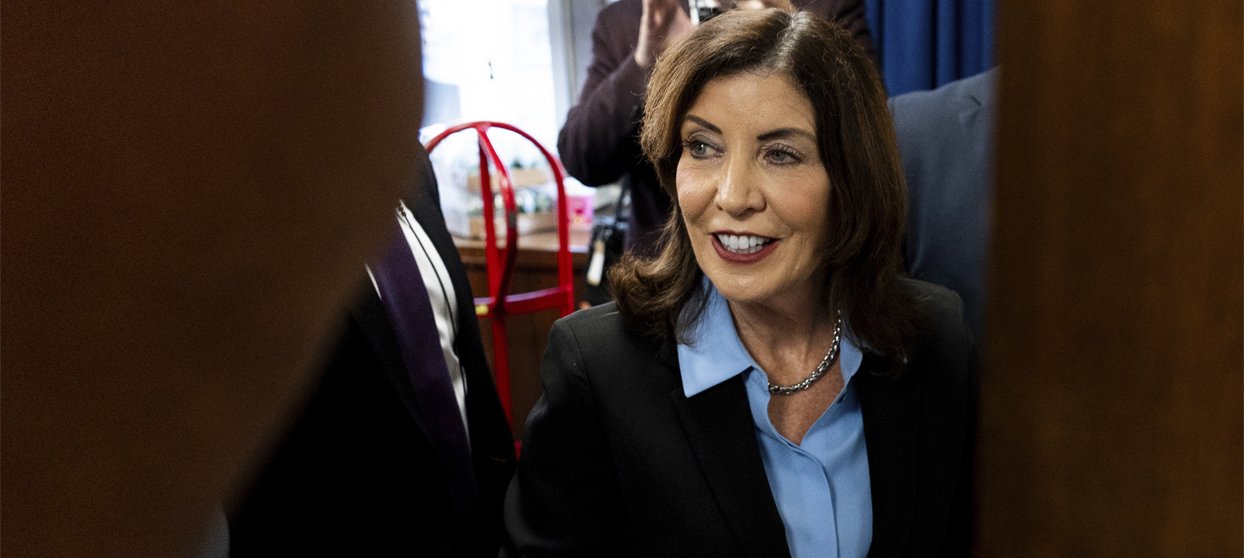
By Shah J. Choudhury | New York | July 2, 2025
New York Governor Kathy Hochul remains the frontrunner in the Democratic primary, but recent public opinion polls raise serious questions about her chances for re-election. A significant portion of voters remain undecided, and growing dissatisfaction with her leadership has created an uncertain electoral landscape.
Strong Position in the Democratic Primary
According to the latest Siena College poll conducted June 23–26, Hochul holds 49% support among Democratic voters, comfortably ahead of Lieutenant Governor Antonio Delgado at 12% and Congressman Ritchie Torres at 10%. While her standing within the party remains solid, broader concerns loom in the general election.
Divided Voter Base in the General Election
Though Hochul leads three potential Republican challengers, she fails to surpass the 50% threshold in any matchup, with a considerable number of voters still undecided.
Against Republican Congresswoman Elise Stefanik, Hochul enjoys 47% support, with Stefanik at 24%, but nearly 29% of voters remain undecided, a sizable bloc that could sway the results.
Facing Mike Lawler, Hochul holds 44%, Lawler 24%, and 32% remain undecided.
In a matchup against Bruce Blakeman, Hochul leads with 44%, Blakeman trails at 19%, yet the highest share of undecided voters appears here, at 37% — adding unpredictability to the race.
Popularity and Voter Sentiment
Hochul’s overall favorability rating stands at 42% favorable versus 47% unfavorable. Perhaps more telling is that only 37% of voters want her re-elected, while a majority of 55% prefer a new leader.
Furthermore, half of voters (50%) believe New York is headed in the wrong direction, reflecting widespread dissatisfaction with the current administration.
Strong Republican Contenders Emerging
Within the Republican camp, Congresswoman Elise Stefanik remains popular, but political analysts suggest Mike Lawler could be a more formidable general election challenger. Polls show that when voters are informed about Lawler, he narrows the gap with Hochul to within 1–3 percentage points, compared to a wider margin against Stefanik.
Conclusion
While Hochul maintains a lead in the polls, her re-election is far from guaranteed. Voter appetite for change, doubts about her leadership, and a large undecided electorate make the race highly competitive.
The Republican opposition is mobilizing aggressively, further intensifying the contest. Ultimately, the election outcome will hinge on winning over the undecided voters and addressing widespread concerns.
The 2026 New York Governor race promises not just a leadership contest but a defining moment for the state’s political future.







